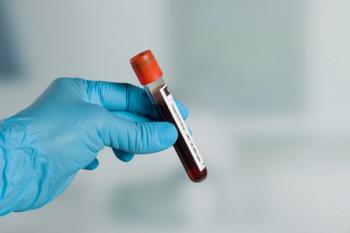
Researchers Identify Key Structure of Deadly Toxin in C. diff Bacteria That May Lead to Future Treatments
Key Takeaways
- Researchers identified the structure of a lethal toxin from Clostridium difficile, aiding drug development efforts to neutralize it.
- Advanced techniques like cryo electron microscopy and X-ray crystallography were used to map the toxin's components.
Researchers observed the structure of a lethal toxin produced by certain strains of Clostridium difficile bacteria.
Investigators were able to identify the structure of a lethal toxin produced by certain strains of Clostridium difficile (C. diff) bacteria, which may help to map out the delivery and binding components of the toxin in order to support the development of drugs that can target and neutralize it.
C. diff is a potentially deadly infection associated with the use of antibiotics. In order to identify the microscopic structures of the bacteria, investigators at the University of Maryland School of Medicine used cryo electron microscopy, X-ray crystallography, and other biophysical methods.
"We identified 2 structures that help explain the molecular underpinnings of C. difficile toxicity," said study co-author David Weber, PhD, a professor of biochemistry and molecular biology and director of the Center for Biomolecular Therapeutics at UMSOM, in a press release. "These structures will be important for targeting this human pathogen using structure-based therapeutic design methods."
Notoriously difficult to treat, some C. diff infections arise from antibiotic therapy administered to target other infections. This occurs due to the antibiotic also wiping out the beneficial bacteria that keeps C. diff infections in check.
According to the Centers for Disease Control and Prevention, more than 500,000 cases occur every year in the United States. These infections can result in approximately 15,000 deaths annually, which usually are caused by strains that prove resistant to treatment with antibiotics.
Currently, there is no drug approved by the FDA that specifically targets the C. diff toxin (CDT), or binary toxin, that has been found to be the most lethal. In light of this, the investigators focused on mapping the structure of this binary toxin, called CDTb, in order to better understand the molecular mechanism of the C. diff toxin, which may be beneficial to drug discovery.
In future research to progress the development of potential treatments, the investigators plan to assess how the active binary toxin complex assembles and dissociates, how it binds to a healthy cell in a patient's gastrointestinal tract, and how it enters the cell.
REFERENCE
Researchers identify key structure of C. difficle bacteria that could lead to future treatments. Baltimore, MD: University of Maryland School of Medicine; January 2, 2020.
Newsletter
Stay informed on drug updates, treatment guidelines, and pharmacy practice trends—subscribe to Pharmacy Times for weekly clinical insights.












































































































































































































